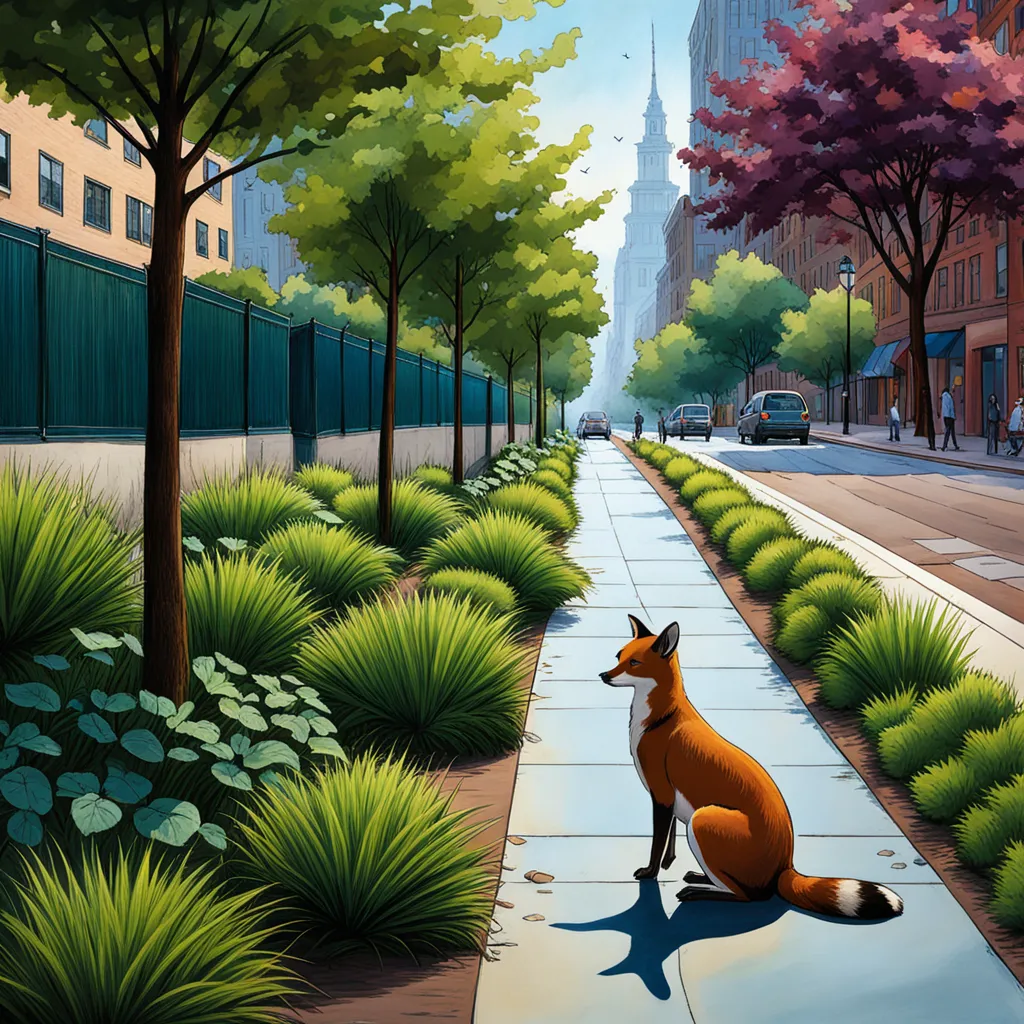Urban Wildlife: Coexisting with Nature
Hey nature enthusiasts! Today, let's take a stroll into the heart of our cities and explore the incredible world of urban wildlife. It's a wild ride filled with unexpected encounters, surprising resilience, and a call to rethink how we share our concrete jungles with the creatures that call them home.

Unveiling the Hidden Residents
Squirrel Shenanigans
Picture this: you're sipping your morning coffee on the balcony when suddenly, a nimble acrobat appears. No, it's not a circus performer; it's a city squirrel, leaping from tree to tree with unparalleled grace. These bushy-tailed daredevils have mastered the art of urban living, turning every tree into their personal playground.
The Pigeon Parade
Pigeons, often dismissed as mere city pests, are surprisingly fascinating when you take a closer look. From their majestic strut to the subtle iridescence of their feathers, these birds have adapted seamlessly to urban life. And let's not forget their uncanny sense of direction – a skill that has made them essential messengers throughout history.
Challenges of Urban Living
Concrete vs. Green Spaces
As our cities expand, green spaces often make way for concrete landscapes. This poses a challenge for urban wildlife, pushing them to adapt to a habitat that may not be entirely welcoming. But, with a bit of creativity and thoughtful city planning, we can strike a balance between the urban jungle and pockets of greenery.
The Raccoon Raiders
Living in a city, I've had my fair share of encounters with raccoons, the masked bandits of the urban night. These resourceful creatures have a knack for finding food in the most unexpected places, reminding us that, even in the city that never sleeps, wildlife is on its own clock.
Embracing Coexistence
Birdsong in the Cityscape
Believe it or not, amidst the honking cars and bustling crowds, you can still catch the sweet melody of birdsong. Urban birds, like sparrows and robins, have adapted to city life without losing their musical touch. It's a reminder that nature's soundtrack persists, even in the midst of urban chaos.
Butterfly Ballet
One sunny afternoon, I found myself captivated by a dance of butterflies in a small park. It was a moment of serenity amid the urban hustle. Creating spaces that cater to the needs of pollinators and other wildlife can turn our cities into havens for biodiversity.
Small Steps, Big Impact
The Bee Buzz
Bees, crucial pollinators for our food crops, face challenges in urban environments. Planting bee-friendly flowers and creating pollinator-friendly spaces can play a vital role in supporting these essential insects. It's a small act that can have a significant impact on the health of our urban ecosystems.
Responsible Feeding
While it's tempting to share a snack with our furry and feathery neighbors, it's essential to be mindful of what we offer. Feeding wildlife human food can disrupt their natural diet and lead to health issues. Opting for bird-friendly feed and leaving natural spaces untouched ensures a healthy relationship with urban wildlife.
The Future of Urban Ecology
Green Roofs and Wildlife Corridors
Cities worldwide are exploring innovative solutions to foster a harmonious coexistence between urban development and nature. Green roofs, wildlife corridors, and the integration of natural elements into architecture are paving the way for a more sustainable and wildlife-friendly urban future.
Our Shared Home
In the grand tapestry of urban life, each species, from the smallest insects to the largest birds, plays a vital role. Embracing the wild side of our cities means acknowledging that, just like us, these creatures are trying to make a home in the ever-expanding urban landscape. By coexisting with urban wildlife, we can create cities that thrive with both human and natural vibrancy.<

No comments:
Post a Comment